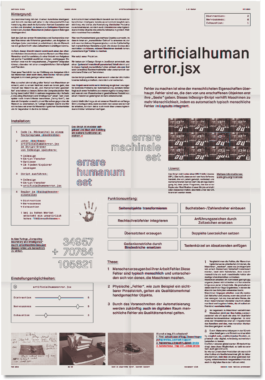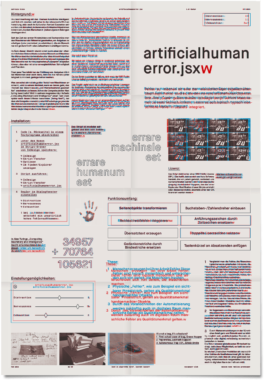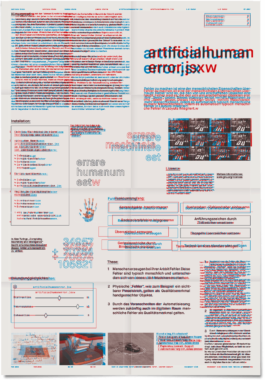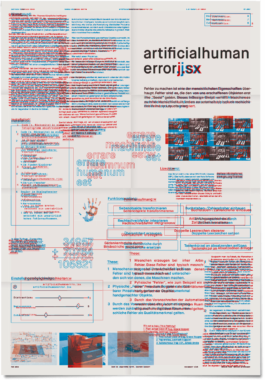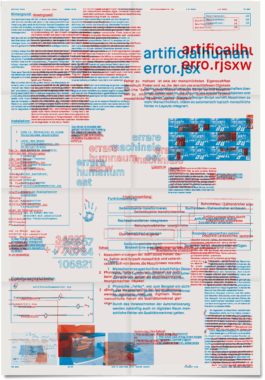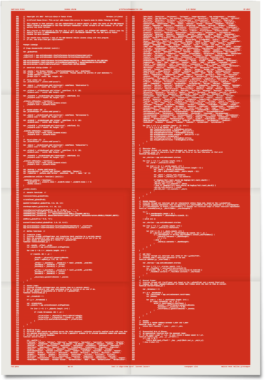One of the obvious differences between humans and machines is that humans, in contrast to machines, are prone to making mistakes.
At first glance this seems like a great advantage of machines. However, when tasked with making it seem as though the machines product was “made by human hands,” this becomes a disadvantage. To replicate the necessary human ductus, machines must learn to make human-like mistakes.
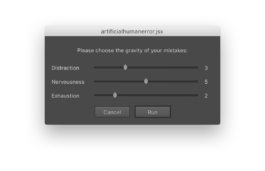
Assertions
When working, humans make mistakes. These mistakes are typically human and are different from those that machines would make.
Physical “errors,” such as a visible brush stroke, are commonly regarded as sign of quality for handmade objects.
The progression of automation will lead to an extension of “human errors as sign of quality” to the digital space.
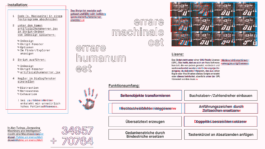
2017
We developed an InDesign script that can automatically add human-like mistakes, such as spelling errors or misplaced images or text frames, to any given layout.
Not only does our project point towards possible solutions for concrete problems related to automation, it also questions our relationship to our own products and what separates a human-made object from one made by a machine.
with Yannic Sturm
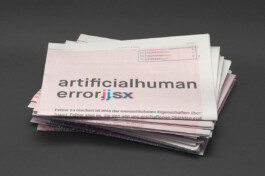
Folding posters
520 × 750 mm
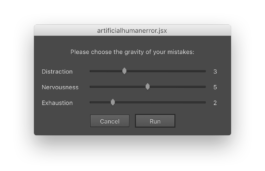
One of the obvious differences between humans and machines is that humans, in contrast to machines, are prone to making mistakes.
At first glance this seems like a great advantage of machines. However, when tasked with making it seem as though the machines product was “made by human hands,” this becomes a disadvantage. To replicate the necessary human ductus, machines must learn to make human-like mistakes.
Assertions
When working, humans make mistakes. These mistakes are typically human and are different from those that machines would make.
Physical “errors,” such as a visible brush stroke, are commonly regarded as sign of quality for handmade objects.
The progression of automation will lead to an extension of “human errors as sign of quality” to the digital space.
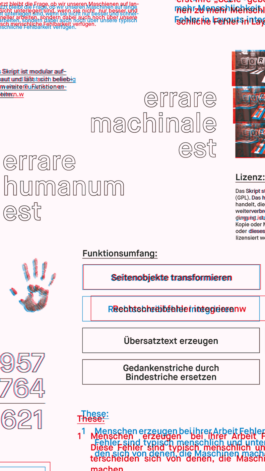
We developed an InDesign script that can automatically add human-like mistakes, such as spelling errors or misplaced images or text frames, to any given layout.
Not only does our project point towards possible solutions for concrete problems related to automation, it also questions our relationship to our own products and what separates a human-made object from one made by a machine.
2017
with Yannic Sturm

